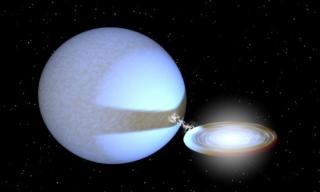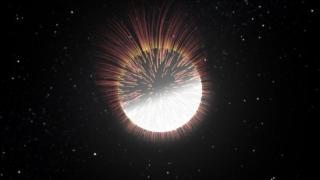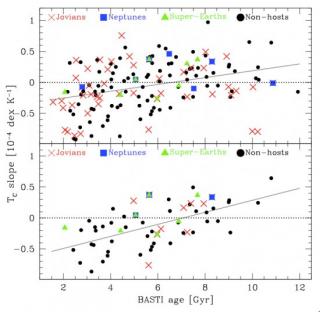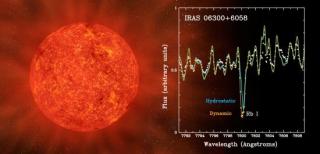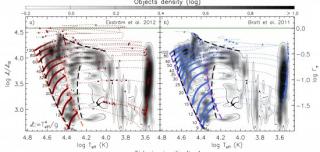![Figure caption: Data of LMC extreme stars are shown as solid, grey circles in the Spitzer color-magnitude diagram ([3.6]-[8.0] vs. [8.0]). The position of the models during the AGB evolution are also shown (where different colors correspond to different s Figure caption: Data of LMC extreme stars are shown as solid, grey circles in the Spitzer color-magnitude diagram ([3.6]-[8.0] vs. [8.0]). The position of the models during the AGB evolution are also shown (where different colors correspond to different s](/sites/default/files/styles/crop_square_2_2_to_320px/public/images/news/resultados131_142.jpg?itok=1coYJ9I3)
For the first time we use self-consistent evolutionary models of low-and intermediate-mass stars (1-8 solar masses) coupled with theoretical dust formation models to follow the evolution of these stars during the Asymptotic Giant Branch (AGB) in the Spitzer Space Telescope two-color and color-magnitude diagrams. These models are the first able to identify the main regions in the Spitzer diagrams occupied by AGB stars in the Large Magellanic Cloud (LMC). The main diagonal sequences traced by LMC extreme stars in the two-color and color-magnitude Spitzer diagrams are nicely fit by carbon stars
Advertised on
